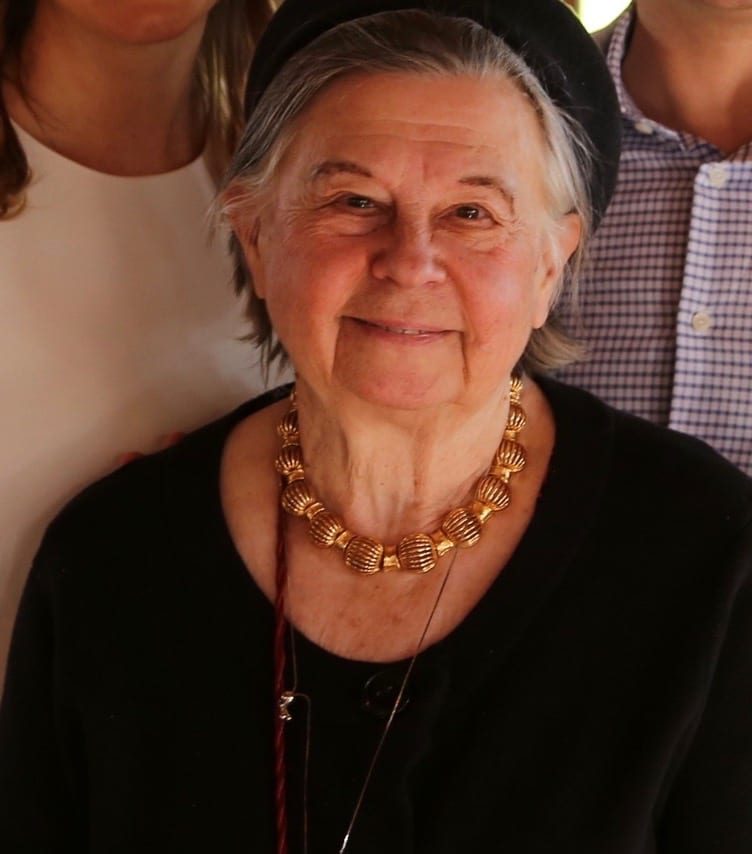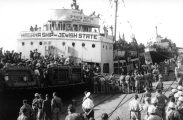- Voices of Descendants
- RUTH ZELIG
- Voices of Descendants
- RUTH ZELIG
Descendant Profile

RUTH
ZELIG
(SECOND GENERATION)
DESCENDANT:
RUTH ZELIG
RUTH ZELIG
RELATED SURVIVOR(S):
-
DESCENDANT BIOGRAPHY BY NANCY GORRELL
Ruth Zelig has been a long time member of the Bridgewater community with her husband Len Oppenheimer and her two children, Emily and Gideon Oppenheimer. She has devoted major time to voluteering at Temple Sholom, her synagogue, where she has served as Sisterhood President, member of the Board of Trustees, eventually serving as President of Temple Sholom. An ardent supporter of women’s participation in Judaism and leadership roles at the synagogue, Ruth has travelled widely, grew up abroad in Israel and Brazil and speaks multiple languages. She is also a Master Gardener. In 2017, Ruth and Len relocated after Len’s retirement from J&J to New York City and upstate New York. In October, 2022 Ruth saw Tom Stoppard’s play Leopoldstadt. This editor received the following email. For an update on Ruth’s reflections, see below.
Reaction to seeing Tom Stoppard’s play, Leopoldstadt by Ruth Zelig
Email: October 16, 2022
During the last scene of Tom Stoppard’s “Leopoldstadt” on Broadway, a series of photographs is projected unto the backdrop of the stage while some of the characters are speaking their lines.
I don’t know how we do it, but watching a play, we can listen to the actors talking, listen to the background music, observe the lighting and staging, all the while taking in the scenery including a projection of a series of photographs. Split second timing for any of it: a spoken phrase, a photo, an ambiance. Sometimes some of these things don’t even register (there’s always a chance to see the play again.)
The top left section of the photograph below was projected onto the back of the “Leopoldstadt” stage, among other historical photographs, and with a jolt, I recognized it instantaneously. My immediate emotional reaction was to tell someone. And then to start crying.
The recognition is irrefutable. I have seen this photo in my parents’ photo album since I was a toddler. In the past few years, I retrieved it from the internet, after doing a more lengthly research into “Aliyah B”, the clandestine exodus of surviving Jews at the end of the Holocaust from Europe to Palestine. My parents and aunt were among the 75,000 survivors who were transported during “Aliyah B”, and among the 2,446 passengers on this particular ship.
I shook Len’s arm, but he was immobile. I then shook Miri and told her “That’s my parents ship!” and she immediately responded and held my arm. Miri understood what I was feeling. The fact that my parents survived and left Europe on one of the “Aliyah B” ships (a few months after the Exodus) is not a reason for me to start crying. My parents and aunt were saved. What unsettled me was that this photo was shown where and when I was not expecting it. And further, the topic of the play “Leopoldstadt” hit home rather un-comfortingly. So, uncontrolled, I became very emotional and tearful. Recollection can be triggered by a single element, a “madeleine”, but to be powerful, it also needs the tea, the setting, and a concurrent ruminating mood.
This image is seared in my mind: with the lettering “HAGANA SHIP – JEWISH STATE” and in smaller Hebrew letters “Medinat HaYehudim”. My parents’ ship. With almost all of thousands of passengers crowded on deck, and the British military standing casually on the docks. Behind it is the sister ship, the “Geula”, the two ships having departed from the port of Burgos, Bulgaria, at the same time, both intercepted by the British. This was a photograph taken after the “Jewish State” collided with the British destroyer, then taken to the port of Haifa. The passengers were not allowed to disembark, they were all subsequently taken to Cyprus where British internment camps awaited them. So close and yet so far, locked up once again.
This is a photograph that reverberates with meaning for me: the view of decommissioned ships and boats, enlisted by organized Jewry (ha’Mossad – The Agency) in the effort to transport survivors no one wanted; floating from port to port looking for a haven.
My parents and aunt were teenagers then. They never said, from what I heard growing up, that they suffered during this ordeal. (Just imagine the latrines on board, and the fact there were no dining rooms to choose from, they ate what they packed in their rucksack or were handed out at departure.) They were so young and so excited. They were full of hope, and finally full of relief from persecution. What they never felt was being welcomed anywhere, until they arrived in Palestine and Israel gained independence.
I was born right after, and the feeling of belonging was unmistakable after Israel was declared a state. Jewish Holocaust survivors finally found a reprieve from their torturers and could snub their nose at the countries that didn’t want them and some gentiles who thought to themselves, Drats — so many survived, or Ho-hum — well, they got what they deserved. Hatred of Jews did not end with the end of the Great War. Sadly, the price for this freedom was very high, and years of war with Arabs, Palestinians, Intifada and terror, charged Israel with an invoice too high to measure rationally.
One cannot dispute, however, that every single soul that is visible in this picture standing on the deck of this rusted tub (it used to be the cutter USCG Northland, purchased as scrap), eventually found refuge and composure. My parents did, at least for a short while, until the damage done to them reared up in later years, in dislocation, mental frailty and self-sabotaging instincts.
One photo, in one instance, dislodged reams of emotional flutter, like ripping open a package of a ream of print paper which then skitters willy nilly from its orderly packed and tidy containment.
Editor’s Note:
As of 2023, Ruth Zelig has completed a manuscript titled Letters from Brazil. The manuscript is an epistolary memoir about friendship and migration. We look foward to its publication.
-
DESCENDANT SUBMISSION(s):
-
Sources and Credits:
Credits:
Ruth Zelig, “Reflections on a Holocaust Legacy, First and Second Generations”; Digital family and historic photos donated by Ruth Zelig





